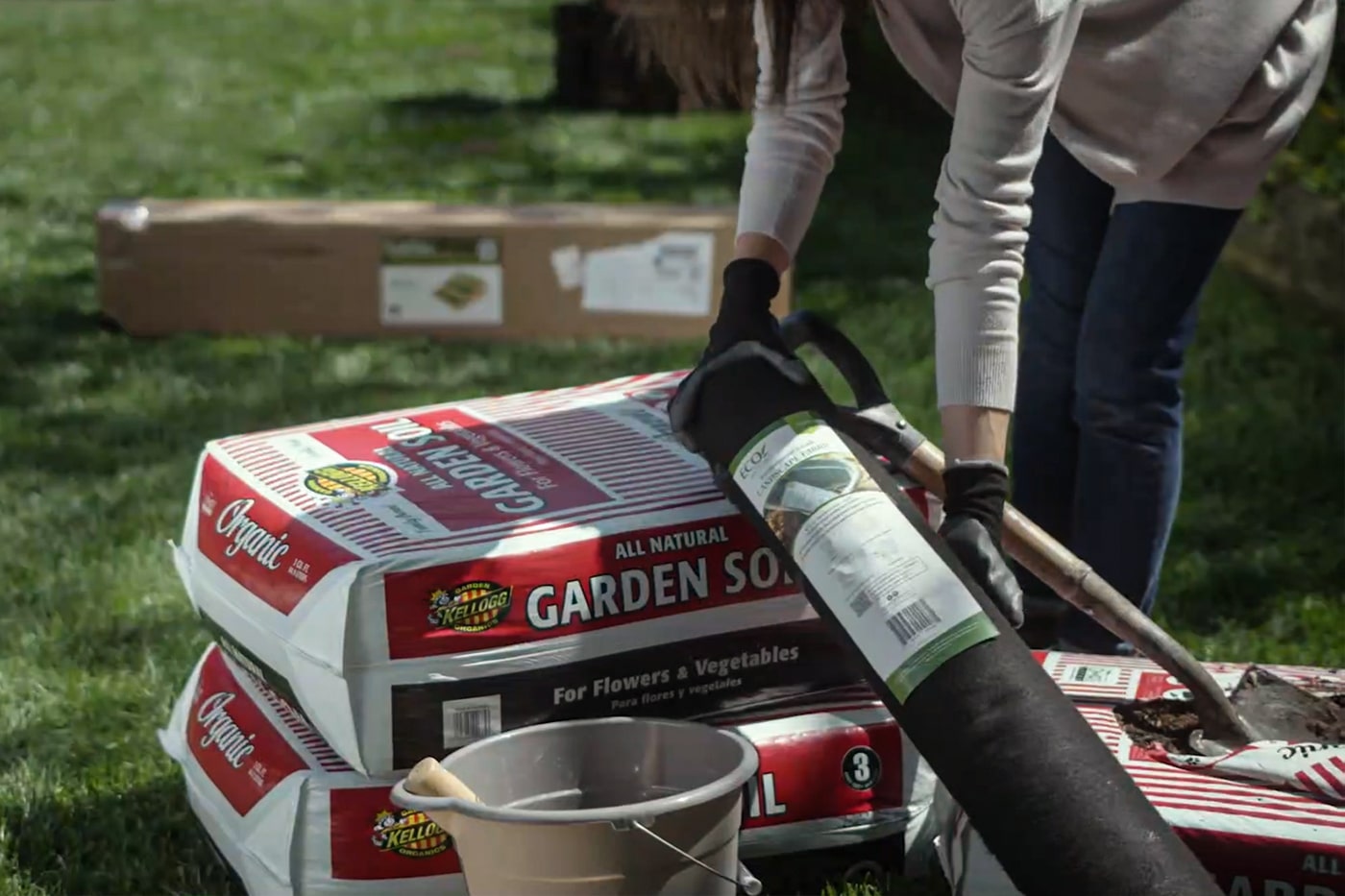You use landscape fabric to improve the look of your outdoor space, but what about your raised bed garden? Can you use landscape fabric in a raised bed? You’d be surprised by the many ways to use landscape fabric in a raised bed garden. Read this guide to find out!
Contents []
Should you put landscape fabric in a raised bed?
It depends on what you’ll use the landscape fabric for. The fact is, landscape fabric is not a necessity if say, you want to control weeds because the confined space makes it easier to control weeds. But, you can use landscape fabric as a raised bed liner for other reasons, such as preventing soil erosion or improving the life of the raised bed itself.
Why use landscape fabric under raised garden beds?

Landscape fabric is beneficial for raised garden beds, here are just a few of the many reasons why you should use landscape fabric for raised bed gardening:
Prevents soil erosion in a raised bed: As a liner, landscape fabric lets water drain away from the soil while leaving the soil intact. While raised garden beds have a wooden bottom, the soil could still wash away in nooks and crannies each time you water the plants. The landscape fabric works as a filter, letting water drain away while preventing soil particles from washing away whenever you water your plants.
Boosts the life of the raised bed: Landscape fabric minimizes wear and tear that could otherwise speed up the deterioration of the raised bed, boosting its integrity and increasing the structure’s life. The fabric works as a protective barrier against the plant roots, which can weaken the raised bed’s structure as the roots expand within the soil. The fabric also protects the raised beds from decay caused by exposure to moisture.
Promotes water retention: For looser soils that cannot hold water well, adding landscape fabric as a liner helps retain moisture for longer. Although made from permeable material, the fabric delays the water flow because it’s an added layer. Water doesn’t gush out of the raised bed as quickly.
Prevents nutrient loss: Soil loss from watering can lead to nutrient loss too. Using landscape fabric as a raised bed liner prevents erosion and minimizes nutrient loss risk. The liner is especially useful for maintaining water-soluble nutrients from the soil. The fabric won’t stop nutrients from being washed away, but water cannot gush out too quickly by holding the soil.
How to install landscape fabric in a raised garden bed?

Getting all the materials needed to make installation a breeze is essential. You can buy the materials separately or get our bundles here to build a raised bed garden much more quickly. We have different bundles to choose from:
Landscape fabric and heavy-duty staple bundle: 3″ x 50″ weed barrier landscape fabric with your choice of 8 or 11 gauge staples.
Raised garden bed bundles: your choice of raised garden bed design + herb kit, landscape fabric, and heavy-duty staples.
Raised Bed with Herb Garden Kit Bundle
Elevated Raised Bed with Herb Garden Kit Bundle
Tiered Raised Bed with Herb Kit Bundle
Once you have all the necessary materials, you can start the installation. Here is a step-by-step guide to installing landscape fabric into a raised garden bed:
Step 1: Measure the raised bed
Getting the measurements right is the most crucial part of installing landscape fabric. You need to know how much material and staples you’ll need per raised bed. So get your tape measure and start listing down the dimension of the raised bed. Allow some excess for good measure.
Step 2: Installing the liner
If you are installing the landscape fabric as a liner, cut the fabric according to the raised bed’s dimension and lay it out, fuzzy side down and the shiny side up. Go flush with the borders and set it in place with the raised bed staples. Don’t skimp on the staples because the liner could move and tear if you use too few.
Step 3: Work on the soil
After installing the landscape fabric as a liner, you can add a layer of gravel or rocks over it or simply fill the raised garden bed with soil. Once the raised bed is filled with soil, amend it with organic fertilizer, remove the weeds and other debris, and break compacted soil for a smoother, looser texture. Any soil amendments, do it before laying the landscape fabric on top of the soil.
Step 4: Installing the landscape fabric on top of the raised bed
Once done with the soil amendments, you can start laying the landscape fabric on the raised bed. Using a hand rake, level the soil surface; it should be smooth and flat. Lay the appropriate size of landscape fabric across the entire area, then use rocks to weigh the fabric down. Cut the excess but leave a few extra inches around the edges of the raised garden bed so you can set it in place with the staples.
After cutting the excess, get your mallet and hammer the staples. If there are existing plants, make X-cuts or holes using a utility knife or scissors so you can insert the plant through the fabric. Finish up with a 2 to 3 inches layer of mulch on top of the material.
If you use a herb kit, you can plant the seeds directly into the soil after filling the raised bed or grow the seedlings in a shallow dish and then transplant them afterward. Cutting the appropriate hole size is essential to give the seedlings room to grow.
As you can see, installing landscape fabric in a raised bed is easy; you can do it on your own using a few garden tools. It’s even easier to do if you have all the materials you need in one fantastic bundle. Check out our raised bed bundles here if you’re ready to transform your blank space into a raised bed garden.



